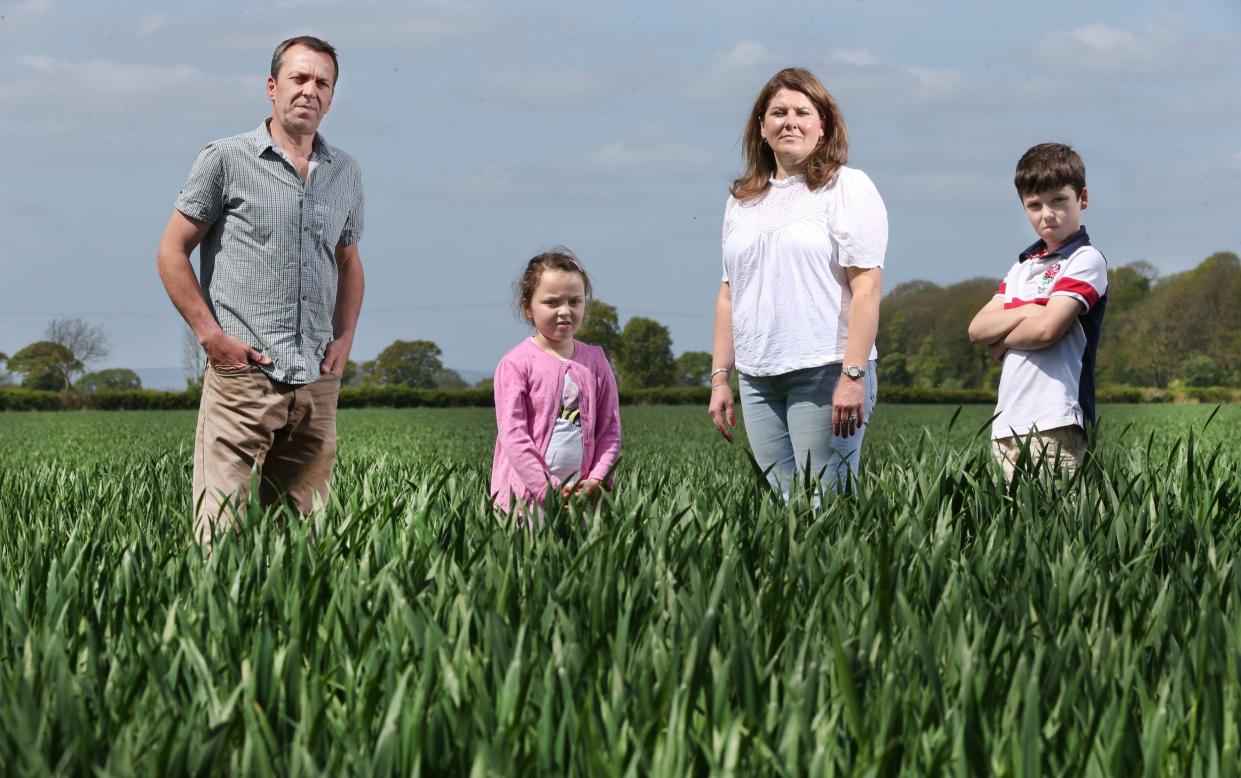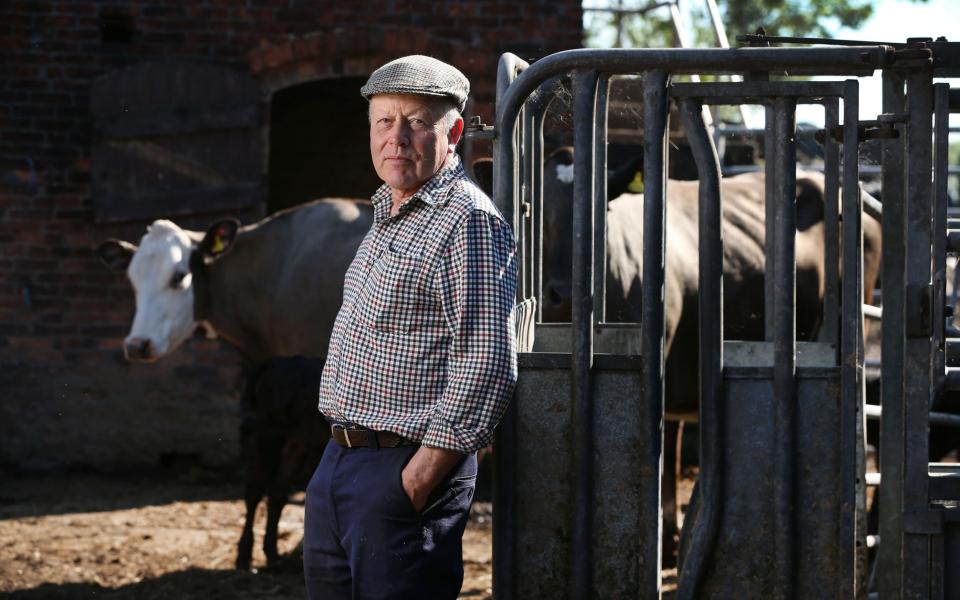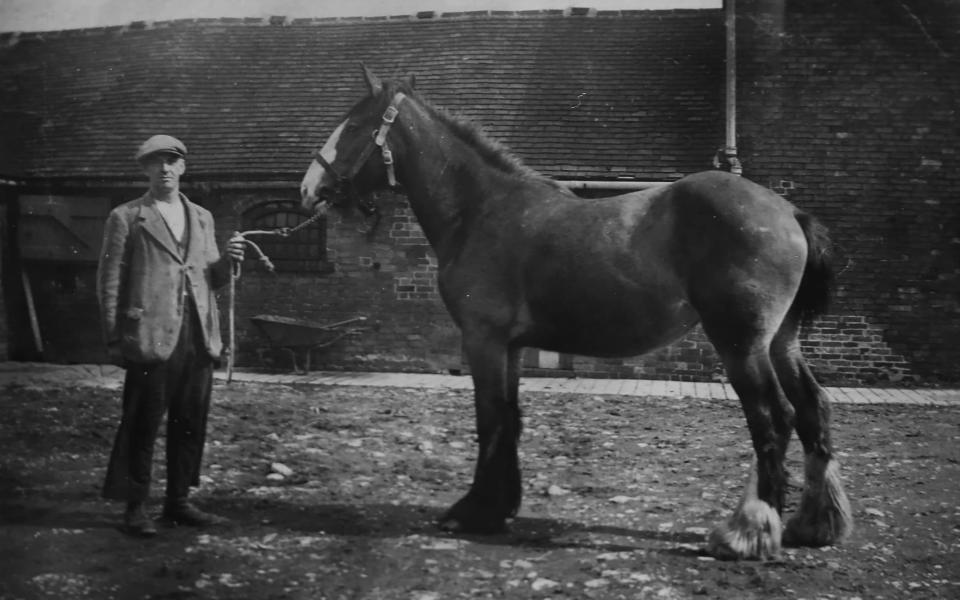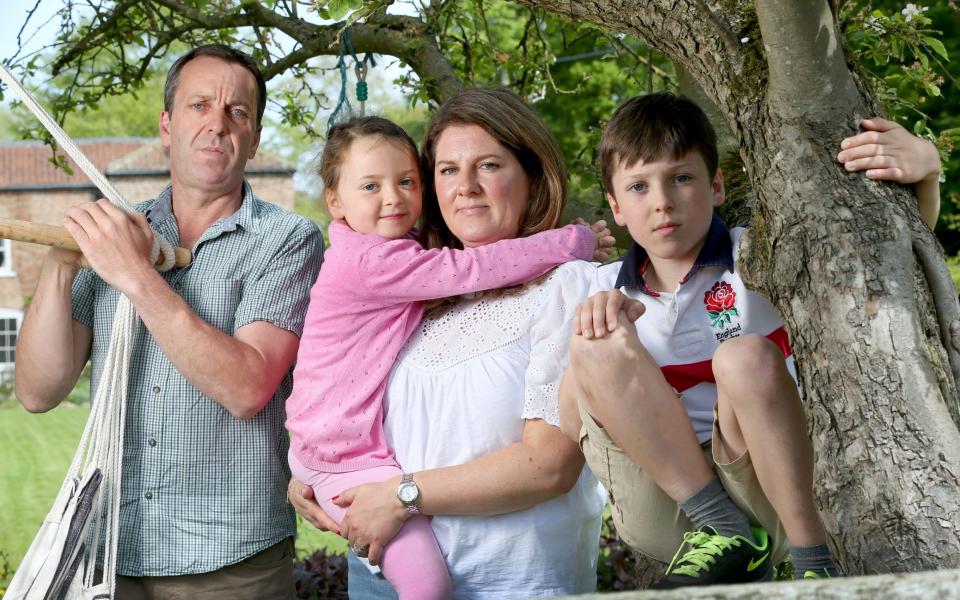‘I don’t want an industrial site where cows used to be’: The farmers under threat from solar developers

“I’ve been here all my life.” Andrew Dakin is taking a break from his cattle on Kidsley Park Farm, 110 acres of rolling grassland on the outskirts of the pretty market town of Heanor between Derby and the Peak District. “It reminds me of me.”
His family have farmed on this flat, upland plane, surrounded by hills, for almost a century, filling in its old open cast mines and over the decades bringing the soil up to standard to support their herds of first dairy cows and now livestock raised for their beef. Bluff, down-to-earth and benign, at 65 Andrew is the third generation of Dakins to tend these pastures as a tenant farmer. It is so much a part of him, he admits, that he has never even wanted to go on holiday because it would take him away from where he feels rooted.
Yet an application has been submitted to local planners at Amber Valley Borough Council by the freeholder of the land to cover it with a solar farm. If approved, he faces being forced off.
Due to incentivised government targets to boost solar power generation fourfold before 2035 to clean up our energy supply in an age of climate change, developers of solar farms are currently offering landowners a very attractive deal. Rents offered per acre of land per year average £1,200, multiple times more than they are getting from their tenant farmers.

In such deals, it is usually the developers, not the landlords, who shoulder the bigger financial risk. That leaves tenants – roughly a third of all farmed land in England is tenanted – particularly vulnerable to the march of these photovoltaic panels.
‘I want to make sure this land is protected’
UK Solar Alliance, a support and information group for farmers in a similar situation to Dakin, says that its members have 70,000 acres of productive land facing a current threat of being turned over to solar. And speaking recently at the Hay Festival, Minette Batters, the former president of the National Farmers’ Union and herself a tenant farmer, made headlines by calling the spread of solar farms in the countryside as “horrifying”.
“The Conservatives certainly know how divisive this is because you saw Rishi Sunak and Liz Truss say in their 2022 leadership hustings, ‘We are going to stop solar on land and put it on rooftops’… [But] until we get a meaningful land-use framework that faces into this challenge, it will continue.”
Andrew Dakin prefers to use the word “swamped” to describe the fate of his fields if solar panels are installed. It’s not his own fate that upset him most, though. He has no children of his own to whom he would pass on Kidsley Park.
“I’m not going to be here forever but I want to make sure this land is protected for future generations because once it is gone, it is gone forever.”
He has a lifetime tenancy which should have made him secure, but a clause in his lease allows his landlord, a large local estate (which he prefers not to name because he still has to work with them) to take it back from him if they can get planning permission to change its use from agriculture. And that is what they are trying to do, working with Intelligent Alternatives, Glasgow-based developers whose stated aim is “new subsidy-free solar and battery storage scheme projects”.

Dakin had anticipated that the planning application would have been submitted already, but reports in recent months suggest there’s been a lull, which may just be a reaction to widespread local opposition. Over 1,000 people in Heanor, and in Smalley, the next village along the road from the farm, have signed a petition.
Earlier this month, Dakin was invited to take four of his calves in his cattle truck, festooned with banners opposing the solar farm, to the annual agricultural and horticultural show in Heanor, its first gathering since Covid. “Local people don’t want this and they don’t want it for their children.”
He has a visit to Heanor’s primary school coming up before the end of term to talk to the pupils about his fight to stay on his land. “There is all the uncertainty, but I’m carrying on.”
He has been reassured that he will be able to stay on in the farmhouse if the solar farm is built, but for him that just adds insult to injury. “I care for my elderly mother who lives with me and has dementia, but I’m not ready to retire and live here in the middle of an industrial site where cows used to be.”
According to George Dunn, the Tenant Farmers Association’s chief executive, his members are facing an “escalating threat” in the rush to solar. “The number of tenant farmers who are being targeted has increased. We have members calling almost on a weekly basis to say that they have found out that there is a solar scheme being planned on their land.”

That was the experience in October 2020 of Robert and Emma Sturdy and their two young children, tenants at Eden Farm in Old Malton, North Yorkshire, in the family since 1954. A few miles from the beautiful Howardian Hills, the area is predominantly agricultural, home to thousands of acres of good farmland which is used for combinable crops – beans, cereal, oil seed rape – all which contribute towards food production.
“We were made aware that our freeholder, the Fitzwilliam Trust Corporation Ltd, was planning a solar development on our farm,” recalls 45-year-old Emma, “but it took until the next month for the land agent to come to see us in person and lay out a map on our kitchen table.”
It showed 130 acres of decent growing land at the heart of Eden Farm’s total of 280, was going to be used for 90,000 solar panels. “We weren’t being consulted, we were being told. Honestly, I nearly fell off my chair and Rob was in shock by the look on his face,” Emma adds.
‘It hangs over every decision we take’
Unlike Andrew Dakin, Emma is happy both to name and to talk about their freeholders. She insists that they have always had a good relationship with them, but feels that in the present very public stand-off, the Fitzwilliam Trust is nervous of bad publicity and so is hiding behind Harmony Energy, the solar farm developers they have signed up with. After three years of campaigning and sleepless nights about their future, a planning decision was reached last October. The Sturdys thought their nightmare was over, when the planners sided with them and rejected the development.
Now, however, the deep-pocketed freeholders and Harmony Energy have lodged an appeal that will not be decided until the end of September, so the limbo goes on. “It is without doubt the most difficult time we have ever been through. It is with us every minute of every day. It hangs over every decision we take about investing in the farming business. And it hangs over our home, our stability, our future.”

Not one to be pushed about, Emma Sturdy has been lobbying Parliament and is one of the founders of Solar Alliance. Like Dakin, she is not against solar and, she adds, she is absolutely not a Nimby. The problem is not a solar farm in her backyard, she explains, it is that prime land that grows crops desperately needed to improve Britain’s food security is going to be lost. She estimates that on her farm alone the solar panels will remove a million loaves of bread from the food chain.
In May of this year, Claire Coutinho, the Energy and Climate Change Secretary of State, appeared to offer a solution, namely that “the best agricultural land [known as BMV, best and most versatile] must be protected for food production”. She promised – as Emma Sturdy has been demanding – to produce regulations on where solar panels could and couldn’t be placed.
For its part, the National Farmers’ Union has a clear position on this. The current president Tom Bradshaw insists that a balance has to be struck between food security and climate ambitions.
“Planning guidance states that, wherever possible, large-scale solar farm development should be located on lower-quality agricultural land, avoiding the most productive and versatile soils. Utilising roofs and farm buildings for solar should also be incentivised as it delivers a sustainable method of energy production while avoiding any land-use conflict.”
Sturdy would happily sign up to that, and remains hopeful that the pending planning appeal will heed such guidance. Yet, since the 130 acres affected are grade one and two prime growing fields, it is hard to understand why they have been targeted by the developers in the first place. The answer, suggests Sturdy, is that what developers want is land close to electricity sub-stations, like her fields, where the cost of feeding into the grid is low.
‘This is our home’
Emma notes: “It doesn’t matter to them whether it is prime or poor quality land. They want the maximum financial return, so a site that will involve as few cables, tunnelling and going under roads as possible to get a connection. The further the distance between the fields and the sub-station, the more likely it is to involve negotiating with several landlords for one project.”

Andrew Dakin – whose farm’s heavy clay soil is, he believes, mostly grade 3 (of 5) - sees it in simpler, moral terms. “Because we are playing catch-up on renewable energy, the developers want quick and easy fixes like building on good farmland. Greed is what this is all about, a younger generation of land agents who want to get rich quick rather than work hard.”
Back at Eden Farm, Emma Sturdy is trying not to get gloomy. “Some days over the past almost four years, I have thought, why don’t we just walk away? But then my husband is a brilliant, hard-working farmer and, even with the statutory compensation we would be entitled to, the chances of us ever being able to afford to buy our own farm one day are remote. With land prices now, farms are beyond the reach of ordinary people like us.”
And so she continues the fight for her family and for all tenant farmers in the same unenviable situation. “This is our home. My husband’s family have invested 70 years into the place. There is still time for the developers and the landowner – with whom we have always had a good relationship – to sit down with us for a genuine consultation to see if there is another way of generating solar power here alongside running a farm that produces the food that will give this country better food security.”


